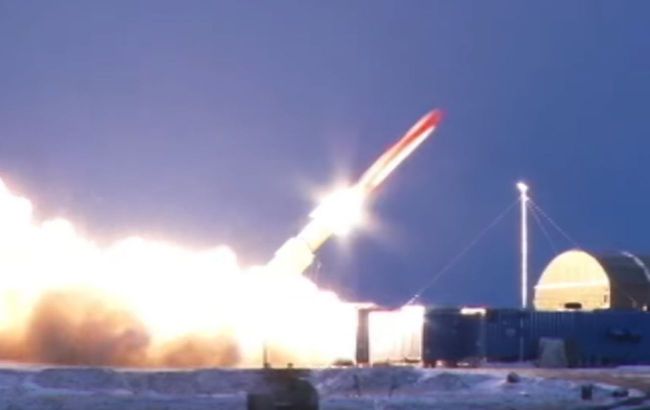Inside Russia's Burevestnik nuclear missile: Why US calls it 'flying Chornobyl'
 Photo: Launch of the 9M730 Burevestnik during one of its tests (Wikipedia)
Photo: Launch of the 9M730 Burevestnik during one of its tests (Wikipedia)
Russia conducted a test of its "unlimited-range" cruise missile with Russian leader Vladimir Putin present. He called it a "unique weapon" and ordered the preparation of infrastructure for its deployment, Defense Express reports.
Russian Chief of General Staff Valery Gerasimov said the test took place on October 21. The flight lasted 15 hours, covering 14,000 km at a speed of about 933 km/h.
There is no independent confirmation of these figures. The information comes only from Russian officials and state media. Preparations for testing the Burevestnik were reportedly recorded as early as August this year.

Photo: Probable appearance of the 9M730 Burevestnik and its launcher (open sources)
Kremlin's long-running project
The Russian 9M730 Burevestnik cruise missile, promoted by the Kremlin as an "unlimited-range weapon," is actually a long-running development. Its design has been underway for nearly a quarter of a century. Work by NPO Novator began in December 2001, but the project was officially announced only in 2018.
Western researchers say Russia has conducted several dozen Burevestnik tests, but no more than one or two were considered successful. The most notorious incident occurred on August 8, 2019, at a test range in the Arkhangelsk region, when an experimental missile with a nuclear engine exploded. The accident killed five Russian scientists, and short-term radiation spikes were recorded within a 30 km radius.
The Burevestnik is presented as an intercontinental cruise missile with a global range. The Kremlin calls it an "unlimited-range missile," suggesting it can strike targets anywhere in the world. Its main feature is a nuclear power unit that heats air to extremely high temperatures to generate thrust. A conventional solid-fuel booster is used for launch.
Burevestnik's specifications
Other specifications remain classified. It is known that the missile’s fuselage is 12 meters long, or about 9 meters after the booster separates. Its speed ranges from 850 to 1,300 km/h. These figures indicate that Russian claims of "interception impossibility" are exaggerated, although high maneuverability does make it harder to destroy.
Another concern is that, according to Russia, the Burevestnik can remain airborne for "months," raising the risk of unexpected strikes. At the same time, extended flight time makes it vulnerable to fighter aircraft.
Currently, the 9M730 Burevestnik is not deployed in the Russian army. Open sources indicate the Kremlin does not plan to place it on combat duty before 2027.
Comparison to Chornobyl
Russian media report that Putin's Special Envoy Kirill Dmitriev claims Russia informed US counterparts about successful Burevestnik tests with a nuclear engine.
It is worth recalling that in 2020, US Special Envoy for Arms Control Marshall Billingslea compared the Russian Burevestnik to Chornobyl.
"We frankly don’t think these weapons should exist at all. Why on earth would you have a nuclear-powered, nuclear-tipped cruise missile? That is nothing more than a flying Chornobyl," he said.
Billingslea also called the missiles "doomsday systems" because of the radioactive emissions they could release during flight.
Earlier today, Russian leader Vladimir Putin visited a command post of the joint military group, where the main topic was a report on the allegedly "successful" nuclear missile tests.

